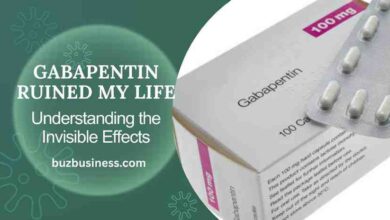How to Stop Joint Pain When It Rains

Days of perpetual or periodic precipitation. Takes one back to thoughts of snuggling beside a flaming hearth under a fluffy coverlet, sipping on lashings of hot cocoa while listening to the drum of rain falling steadily on the ground outside. For many unfortunate people, though, the promise of rain in the air can also herald the onset of aching joints, which is just a pain in the neck!
Have you ever found that your fingers, knees, or hips pain when the weather is wet and dreary? Then you are not alone. It is definitely not an old wives’ tale that some can forecast bad weather in their bones.
Weather-related joint pain is as real as little green apples, especially for sufferers of arthritis, or anyone with old injuries or chronic inflammation. Make yourself comfortable, and I’ll tell you the not-an-old-wives tale about the link between rain and joint pain.
Before a storm, the barometric pressure drops, which means a drop in the weight of the atmosphere or the air pressure. Tissues in the body respond by expanding, and when the tissues around the joints do this, sufferers can experience an increase in levels of pain and inflammation.
How to stop joint pain when it rains
Another cause of joint pain that links to weather is how the oily lubricant between joints reacts sluggishly when the weather is cold. The lubricating effect is lessened, and so the joints, muscles, and ligaments become stiffer and more painful. Or it could just be that we like to be sedentary when it’s cold outside, snuggling in and moving less, which leaves the joints stiffer and all the more sore.
Sometimes, you just have to accept that mind over matter is a psychological component that plays havoc with the best of us. Mood is linked irrevocably to the perception of pain, and the weather can and does affect one’s mental state, and this in turn impacts the way pain is perceived. Let’s use Seasonal Affective Disorder, or SAD, as a way to explain this phenomenon. When it’s rainy, gloomy, and dark, a person’s mood is often negatively impacted, and depression becomes an obstacle. Mood and depression can and do heighten the perception of physical pain.
Bear in mind, too, that foul weather has you holed up indoors sometimes against your will. You have fewer ways to distract yourself, and you could therefore become more aware of your aches and pains and bodily sensations. Enter joint pain, stage left.
Why the Pain?
The pain is real, and it does help to have a definite diagnosis going forward. So, before we leap to how to stop joint pain when it rains, why are you in pain in the first place?
Overuse and Repetitive Motions
Joint pain has moved with the times, as is evident by this relatively new kid on the block. The medical field has experienced an exponential rise in cases of RSIs, known as repetitive strain injuries or repetitive stress injuries. Pain sets in the joints after any kind of repetitive motion that eventually puts a strain on the related ligaments, tendons, joints, and muscles. Think activities along the lines of texting on a mobile phone, repeated motions like typing on a keyboard, overuse of the upper body during sport or yard work, or prolonged awkward postures such as holding a mobile phone at eye level without supporting the elbow or hand joints.
Osteoarthritis presents more commonly in elderly people as a degenerative disease of the joints, which breaks down protective cartilage in the affected areas of the body.
Rheumatoid Arthritis is an autoimmune disease that is both chronic and systemic. The immune system erroneously causes the body to attack the lining of its very own joints. Rheumatoid Arthritis most commonly presents as inflammation, pain, and stiffness, affecting the hand, wrist, and feet.
Other forms of arthritis will not be mentioned at this time.
Muscle Strain and Sprains and Injuries
Gout
Depression, Anxiety, and Stress
Vitamin D Deficiency.
Let’s get down to brass tacks and discuss how to Stop Joint Pain When It Rains.
Keep Warm
Warmth is a fine way in which to moderate the effects of stiffness in the joints. Warmth or heat is also very effective in boosting blood flow to the impacted areas of the body. This being the case, it makes sense to take steps to keep your body warm when looking for immediate relief and an efficacious answer to how to stop joint pain when it rains. What makes even more sense is implementing a stepped plan that begins with enjoying a warm shower or steeping yourself in a warm bath. This not only warms you all over, but it also relaxes the muscles and improves circulation. Then you can go on to layering once you’re dried off and toasty warm after the shower or bath. What you want to do now is retain that body heat, so wear clothing in layers.
Using simple ways to focus heat on the problem areas only is a great way to heat painful joints. Suggestions that most households will have on hand include hot water bottles and heated blankets. Not as commonly found is a thermal wrap.
Move
Move around, get the blood flowing, and remember that a stretch in time saves mime. So say no to vegging out and don’t get caught sitting still for too long. Get up and get going. All it takes is just a few minutes of light physical activity and you will see an improvement in your aching joints. Set a timer to remind yourself if you need to.
Movement actually lubricates the joints, you know, which prevents stiffness from setting in. You don’t have to go overboard; just take a walk around the rooms of your house, going from one to another, or try a little gentle stretching or yoga. Tai Chi is a great pain reliever, and it has the added benefit of improving balance.
Eat to Reduce Inflammation
Fatty fish, salmon, sardines, leafy green vegetables, spinach, kale, nuts, seeds, cherries, berries, orange, and olive oil are all recommended as part of a workable anti-inflammatory diet. Eat right to fight joint pain from within.
Avoid processed foods of any kind. You will also do well not to put refined carbs in your body, nor trans fats, or sugary drinks and snacks.
Hydrate
The body is made up of fluid. It is easy to understand, therefore, how replenishing the body’s water supplies is integral to good health. Drinking to your health never made more sense than it does when you recognize this about your own body. What’s more, joint cartilage is mostly water, which is why dehydration reduces the cushioning in joints, and that can increase joint pain.
Drink at least six glasses of water a day. Eight glasses would be even better. That does not include water with coffee in it, or even tea. It does, however, include water infused with lemon, cucumber, or berries to add flavor.
Smart Supplements
Supplements to support joint health that boast anti-inflammatory properties are out there, but they must be taken consistently and always on the advice of your health practitioner. Think omega-3 fatty acids; vitamin D, turmeric and curcumin, and Glucosamine and Chondroitin for cartilage support.
Topical Pain Relief
If you don’t want to swallow the pain away, rub on the relief. Creams or gels containing diclofenac, menthol, or capsaicin will do the trick, especially when used just before hopping into bed at the end of the day or first thing in the morning. How to stop joint pain when it rains? Just rub on topical cream or gel wherever and whenever you feel rain on the cards in your bones.
Healthy Weight Helps
Aim to be lighter to be kinder to your joints, especially your knees, your hips, and your lower back.
Keep One Eye on the Weather
Plan to be pain-free by tracking barometric pressure and watching out for storms on the way, and then increasing your activity the day before a storm is expected. Be proactive and get your heat wraps, creams, and gels ready ahead of time so that you are well prepared to treat the joint pain that comes with the storms.
A Stretch a Day Keeps the Aches at Bay
Keep your problem joints flexible and counter stiffness with just ten minutes of light stretching exercises that are gentle and focused on your hands, hips, knees, back, and shoulders. Try using resistance bands for that extra bit of oomph.
Chiropractic Remedies and Acupuncture
There’s nothing quite like alternative therapies for relieving chronic joint pain, as you will know if you have ever enjoyed the hands-on care of a chiropractor or acupuncturist.
Seek out a certified professional chiropractor to fix any joint alignment issues and relieve existing pressure. Acupuncture in the mix, aimed at energy bodily pathways, will also promote healing.
Physical Therapy and Massage Therapy
Massage therapy relieves muscle tension and improves circulation. Hands-on professional therapy goes deep to get to the muscles surrounding the joints, reducing pain and improving range of motion. You can ask for a personalized plan made just for you to get even better results.
Try incorporating massage therapy and physical therapy treatments in conjunction with at-home strategies.
Improve Sleep Quality
You’re going to feel the pain more if you’re suffering from sleep deprivation. What’s more, poor sleep quality increases the onset of inflammation. If you can keep to a consistent bedtime routine, sleeping with orthopedic pillows and a supportive mattress, more’s the better. If you feel that your sleep environment is less than ideal, employ the sounds of a white noise machine and try weighted blankets for added benefits.
Take Back the Power Through Compression
Who said looking after your joints when it’s rainy can’t provide you with a great opportunity to make a fashion statement? Sip into those oh so supportive compression sleeves and feel the difference right down to your bones! But why stop there? Go the whole nine and a half yards, and don the compression gloves, too. There is nothing quite like fashion statement compression gear for reducing swelling and supporting those rain-weary joints.
Chronic Pain and Mind-Body Techniques
There are plenty of Apps out there you could use as a guide to relieve stress through progressive muscle relaxation, meditation, and deep breathing techniques. Cognitive Behavioral Therapy, or CBT, could help the way you perceive and manage joint pain.
Medication if Needed
Prescription or over-the-counter meds do have their place in the treatment of painful joints.
Doctor Visits
Frequent, severe, or persistent joint pain when it’s not even rainy might be telling you it is time for a word with the doc to get professional medical advice.
How to stop joint pain when it rains, so that rain doesn’t have to mean pain. While rainy weather has had you doubling up in pain, joint aches do not have to be an inevitable accompaniment to wet days. Reduce the aches, pains, frustrations, and discomfort with the tools you now have in your arsenal. Stay active and enjoy the significant results now that you know better… even when rain is on the horizon and the storm clouds are rolling in overhead.
Take baby steps to maintain body heat and ensure you are kept sufficiently well hydrated, move regularly, and power your body with anti-inflammatory nutrients. With these know-hows, you are free and able to prevent rain-related joint pain.
You don’t have to stick to just one strategy. Try a combination of two or more of the suggested approaches until you have a foolproof regime in place and you are assured that you know how to stop joint pain when it rains. Knowledge is power. Applying knowledge about your own body can assure you of pain-free joints even when the weatherman says the chance of precipitation is way higher than your bones would like.



